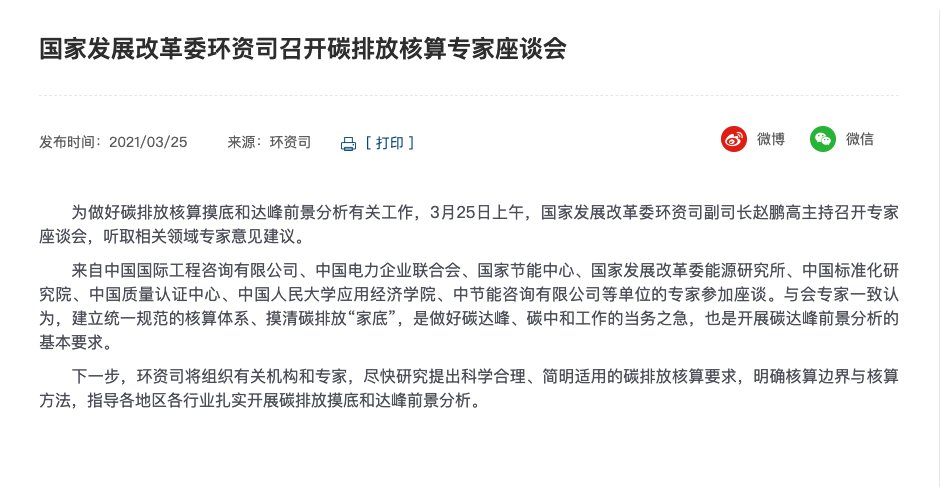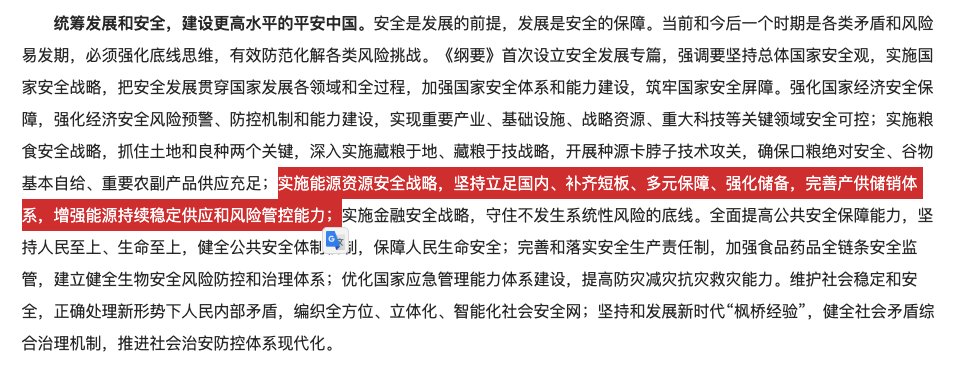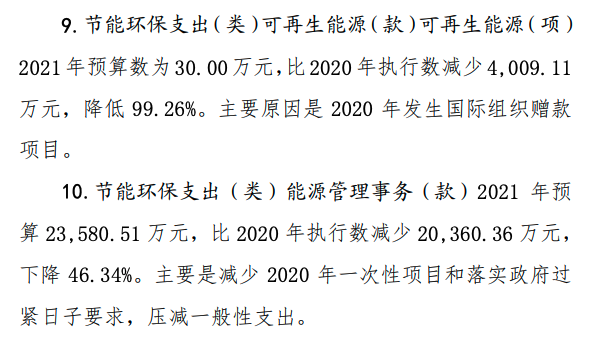
I figured people are eager to know about the most recent update on China's climate actions. I'll try to do a weekly round-up here. For more detailed China climate news updates, pls do subscribe @CarbonBrief's daily & weekly brief (t.ly/oDrg) compiled by @tracyyou.
https://twitter.com/LHongqiao/status/1373925572703887360
1.1 Beijing CPC committee & govt committed to building a national voluntary GHG emissions reduction management & trading center t.ly/b8Ak
Background: the new China ETS allows entities to offset 5% of verified emissions via China Certified Emissions Reduction (CCER)
Background: the new China ETS allows entities to offset 5% of verified emissions via China Certified Emissions Reduction (CCER)
1.2 The same policy document also says to implement Extended Producer Responsibility (EPR) on end-of-life EV batteries, which can create pollution but also serve as a source of rare critical raw materials. In addition, it says to set up a marketized *green development fund*.
2.1 Ma Jun, "the father of green finance in China", suggests consolidating the existing ETS in Guangzhou & Shenzhen and setting up a new ETS in Hong Kong to form a unified market in the Greater Bay; then, opening up trading via *carbon connect* in HK. t.ly/KPLc 

2.2 Ma says the "carbon connect" in HK can follow existing practices on bonds & stocks, to allow foreign investors to enter the carbon market in mainland China, which is set to start trading in June 2021.
Current interim regulation doesn't specify foreign investors' activity.
Current interim regulation doesn't specify foreign investors' activity.
2.3 Echoing Premier's emphasis on developing innovative financial products to accelerate decarbonization, Ma suggests developing *carbon footprint-linked loan & bond*. Similar products such as sustainability-linked loans & bonds already exist and are booming in recent years.
2.4 His other suggestion on developing *transitional finance* is more controversial, as such products aim to finance carbon-intensive activities to cut emissions but without fuel switch to renewables, i.e. new gas-fired power plants & renovations of the hard-to-abate industries.
3.1 Minister Huang Runqiu (MEE) went to Tangshan city in Hubei Province to examine the implementation of emergent production reduction order as part of the "Air Ten" issued for tackling the "war on air pollution". Huang is disappointed with faked record.
https://twitter.com/LHongqiao/status/1373925580362690562?s=20
3.2 Huang is also disappointed about the process of the nationwide ultra-low emission upgrade in the iron & steel industry started three years ago. Key regions such as Hebei should have achieved "significant progress" by 2020, & renovated 60% of capacity. t.ly/pTIf
3.3 The 2019 policy requires all capacity in key regions and 80% nationwide to complete the ultra-low emission upgrade by 2025. It is foreseen that in the upcoming specific five-year plan for the steel industry, such actions will be enhanced.
3.4 MEE says in the 13FYP (2015-2020), the steel industry has managed to reduce emissions (air pollutants) while increasing 32% of crude steel production and overturned the net deficiency in 2015 to net profit up to 260-500 yuan. t.ly/0AeA
3.5 Li Xinchuang, chief engineer of MPI, a state-advisor on metallurgical planning, says the ultra-low emission tech adds 40kgCO2/t steel output, accounting for 2% of total emissions of steel plants but it's offset by the emissions saved from clean production (30-43kgCO2/t).
4.1 China National Radio: the draft "Action plan for peak emission and emission reduction of the iron & steel industry" is formed, proposing the industry sector to *peak emission by 2025*, and reduce 30% less emission compared to peak level by 2030. t.ly/Aljy
4.2 The draft proposes five technical pathways: promoting green layout, improving energy efficiency, optimizing energy use and process structure, building a circular industry chain, and applying breakthrough low-carbon technologies such as green hydrogen.
4.3 But it seems the best way to cut emissions is to cut production. According to Luo Tiejun, vice president of the China Steel Industry Association, China needs to increase the import of waste steel & other primary products, and *prohibit* the export of low value-added products
4.4 Luo Tiejun adds the potential to further reducing energy intensity & carbon intensity reduction of the iron steel industry is *limited*, which is sensible as the marginal cost for further abatement goes much higher and breakthrough technologies are still expensive.
5.1 The National Development and Reform Commission (NDRC) organized another roundtable discussion on carbon emission accounting with its own Energy Research Institute, China Electricity Council, China National Institute of Standardization, a few state-owned companies & scholars. 

5.2 After the Department of Climate moved from NDRC to MEE in 2019, there've been speculations that MEE will take over all the climate-related affairs. However, NDRC's Department of Environment & Resources keeps some mandates on clean production, climate actions & energy saving. 

5.3 Most importantly, NDRC keeps the mandate on formulating energy consumption control targets (the caps on total consumption and intensity), which also makes sense, as it oversees the National Energy Administration and is responsible for the overall planning on industries.
5.4 NDRC proposes a "1+N" policy system for the "upper-level planning" of peak emission and carbon neutrality. "1" refers to "guideline opinions" from NDRC, "N" refers to specific action plans for each industry which will complement the specific 14FYP on industry sectors.
5.5 As peak emission and carbon neutrality have become the most important political priority in China, each ministry is working on its own (sometimes in joint forces) to showcase its muscles. But is competition a good thing when we actually need synergies?
https://twitter.com/LHongqiao/status/1373925575082004480?s=20
6.1 China climate special envoy Xie Zhenhua is back on the stage after announced retirement in 2019. Since March, he has carried out dialogues with:
UNFCCC Executive Secretary
UN Deputy Secretary-General
EU First Vice-President
South Africa Minister of Environment
UNFCCC Executive Secretary
UN Deputy Secretary-General
EU First Vice-President
South Africa Minister of Environment
6.2 On March 23, Xie participated in the Ministerial on Climate Action. He welcomed the return of the US to the Paris Agreement and looked forward to seeing it "catch up and show leadership". t.ly/34kc 

6.3 Xie Zhenhua also says China has achieved the *decoupling* of economic growth and carbon emissions but more "hard work" is needed as China faces a "very urgent" timeline for realizing its climate targets.
Xie is right, the decoupling is happening...
Xie is right, the decoupling is happening...
https://twitter.com/hausfath/status/1374066152813383681?s=20
7 Following the return of nuclear in national energy planning, China forms a new National Nuclear Safety Standardization Technical Committee, which will develop and revise a series of national safety standards from radioactive waste to nuclear reactors.
https://twitter.com/LHongqiao/status/1367794900813684736?s=20
8.1 The demolition of Datang's wind farm in a protection zone triggered another important discussion: what to do with the upcoming wave of *retired wind turbines*? China Energy News says 33,000+ wind turbines will retire in China in the next ten years.
https://twitter.com/LHongqiao/status/1374319678852567048?s=20
8.2 During the 14FYP, ±10GW wind capacity will approach or have reached its design life. A recent consultation draft from NEA proposes to launch technology upgrading of old and aged wind turbines, but neither policy nor technologies are not in place to deal with this.
8.3 Among other reasons, critical raw materials, i.e.*rare earths* used in the generators of the wind turbines should be prioritized for recycling and reuse. EU has included this approach in its circular economy plans as a means to improve resource security. Why shouldn't China?
9.1 State Council expects the People's Bank of China (PBOC) to work with MEE, to launch specific policies that support green & low-carbon development and specific tools for supporting emission reduction before June 2021. t.ly/zV10 

9.2. The State Council names a total of 16 central govt organs for "solid work on peak emission & carbon neutrality". It seems NDRC remains the most important ministry in this work, followed by MEE, Ministry of Foreign Affairs, and Ministry of Technology (the sequence matters).
10.1 NDRC, which drafted the 14FYP Outline, published an official interpretation of the Outline for 14FYP and 2035 on QiuShi (QSTheory.cn), a CPC Central Committee Bimonthly journal. t.ly/0pdg 

10.2 NDRC says the qualitative description on GDP target is a "significant innovation", as China is moving away from past GDP-centered policymaking, considers the uncertainties & risks ahead, and focuses on *flexibility* and *high-quality development*.
https://twitter.com/LHongqiao/status/1369937091367477252?s=20
10.3 NDRC emphasizes 2 tasks on energy: *energy transition* that aligns with climate pledges, and *energy security* which focuses on safeguarding stable supply & building capacity on risk management. The latter has been repeatedly used by the coal industry to continue expansion. 

10.4 NDRC also explains how the "national planning system" works, which doesn't seem to be common-sense among China observers: the Outline sets the tone, then follows spatial plans supported by specific & regional plans at the state/provincial/municipal level. 14FYP = all above. 

11 NEA says it had significantly achieved the de-capacity target on phasing out small-scale (production capacity below 300,000 tonnes/year) and backward coal mines: shut down 911 coal mines and reduced 45% production capacity v. 2018. t.ly/uF7k 

• • •
Missing some Tweet in this thread? You can try to
force a refresh





